Table of Contents
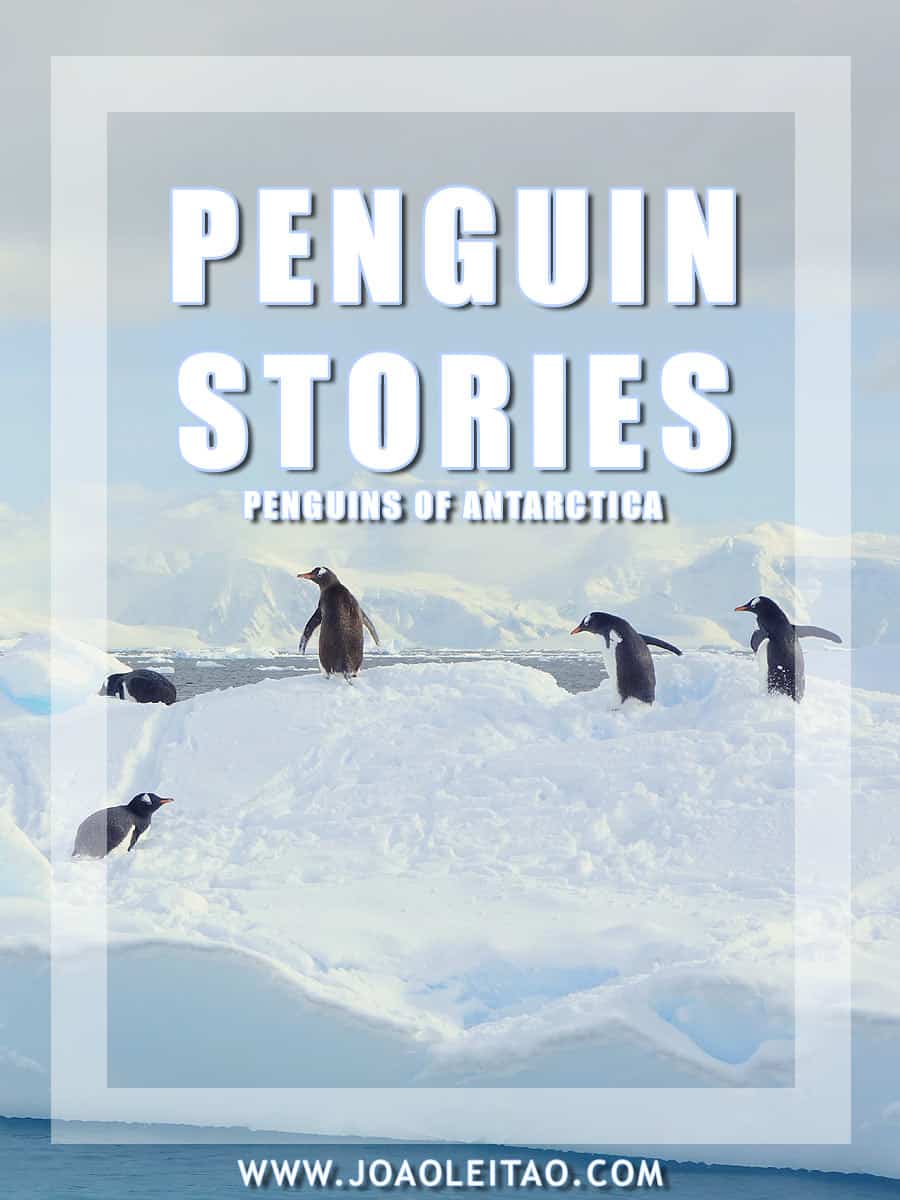
Let’s face it, everyone likes penguins and everyone likes Antarctica.
Definitely, one of my trip to Antarctica highlights was the opportunity of being in so close contact with thousands and thousands of penguins.
Of course I’ve seen penguins in other places in the world (Ecuador, Peru, Chile and Argentina), but, penguins, ice, and the incredible inhospitable scenery of Antarctica are somehow the perfect combination.
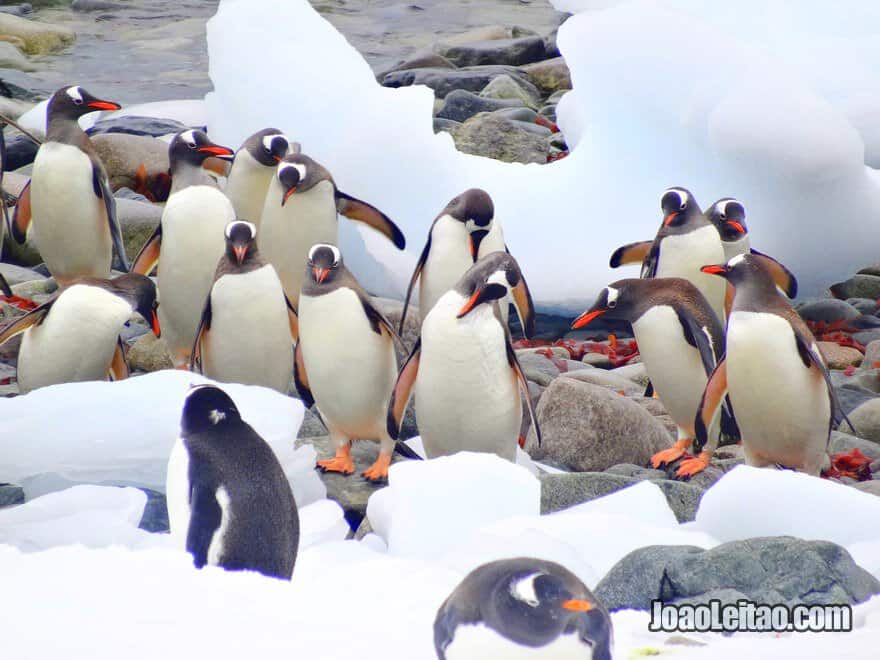
Petermann Island
Penguins are the genuine land inhabitants of the Antarctic continent, I mean, they control the whole thing (expect for the nasty and scary leopard seals and orcas of course). Some penguins will welcome you, some will try to bite your pants and boots, but the majority will just be curious.
I traveled along the Antarctic Peninsula and South Shetland Islands during 15 days. Departing from the Argentine city of Ushuaia I crossed the thrilling Drake Passage, down to 68°11 S 67°00 W in Stonington Island, beyond the Antarctic Circle.
On this page I will try to tour you around the places where I’ve seen penguins. But first let’s read a story about penguin survival in Petermann Island.
ATTENTION: this page contains highly friendly penguins. Proceed at your own risk.
Petermann Island Life & Death Story
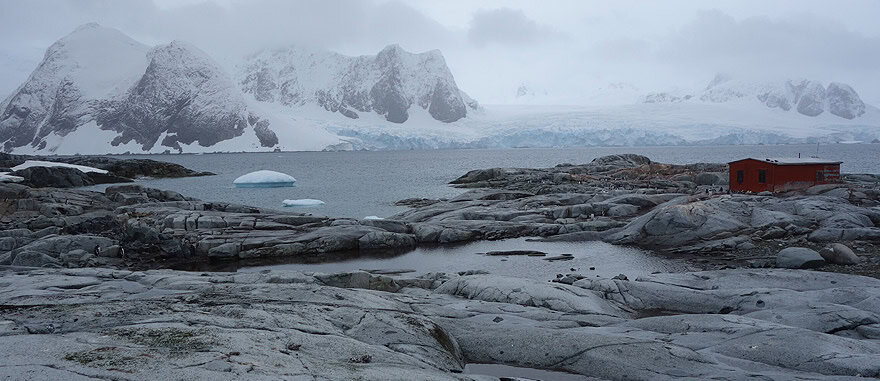
Petermann Island is a few 2 km / 1.25 miles long Antarctica island, located off the coast of Kiev Peninsula in Graham Land.
Life here runs smoothly, peacefully.
Apart from the daily tasks of swimming to get food, going up and down the hill, and pooping,
penguins do spend most part of their day preening.
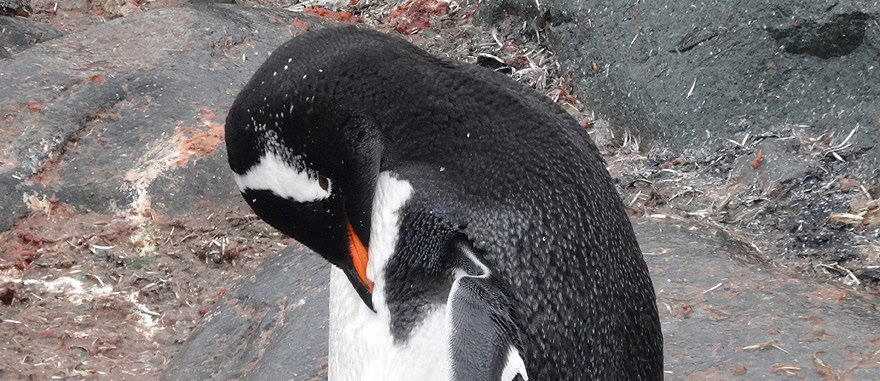
As I was saying, penguins do spend most part of their day preening, but also, every time in Petermann Island is time for a nap.
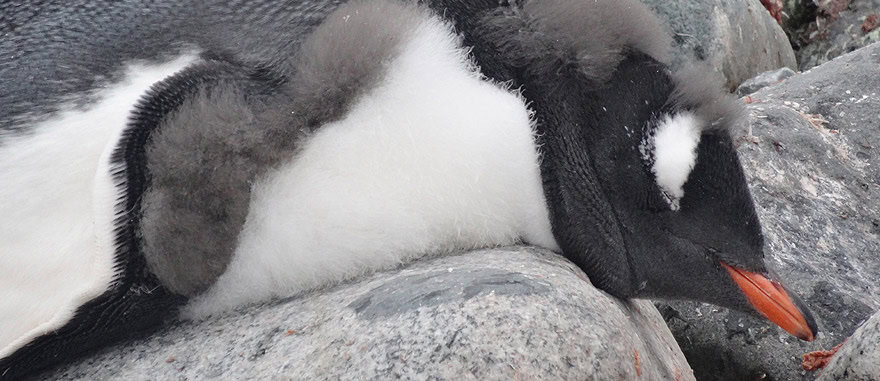
Although it sounds very nice for us, in Petermann Island there is a daily effort for survival.
During the baby season, all the animals on this island need to get food to feed their chicks.
NOTE: Preening is something penguins do to groom their feathers, spreading their natural skin oils from a tail gland. This activity makes their feathers waterproof and is the most important thing for penguin survival. Why? Well, penguin plumes are exposed to extreme weather by the Antarctica icy waters and cold winds. If they don’t have waterproof feathers, while fishing for food, their body will get cold and they will die with hypothermia – which happens many times.
Adelie Penguin Adaptations: Preening by Penguin Science
Meet the bad ass Mr. South Polar Skua
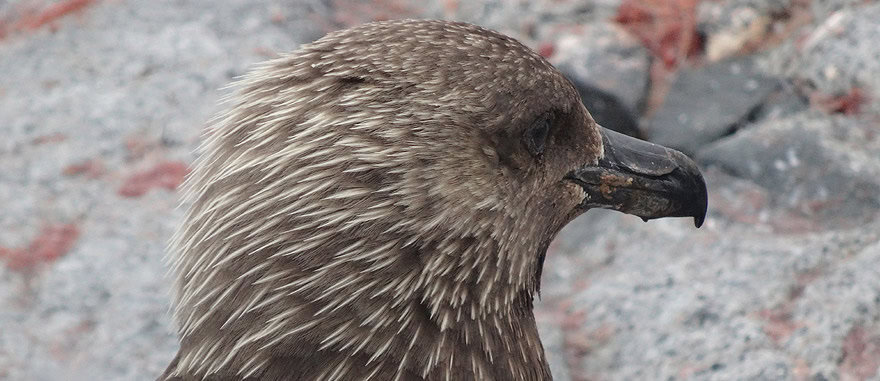
He is always hunting for food, and he loves little, cute, fluffy baby penguins.
Meet the fluffy baby penguin
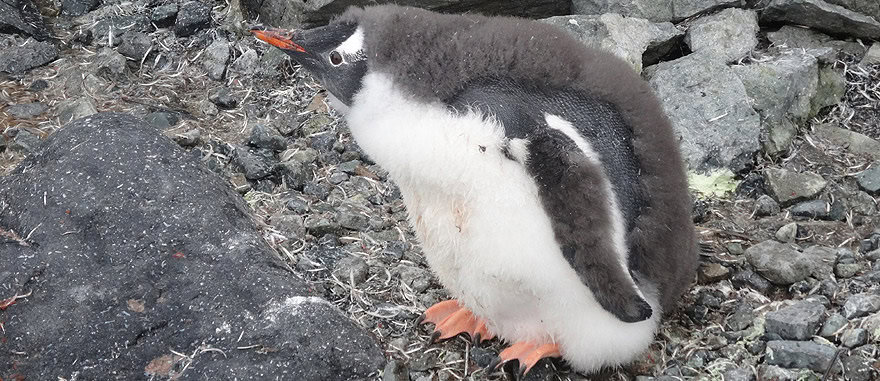
The South Polar Skua first mingles among the Gentoo penguins. Like if nothing is going on. A normal day in the neighborhood.
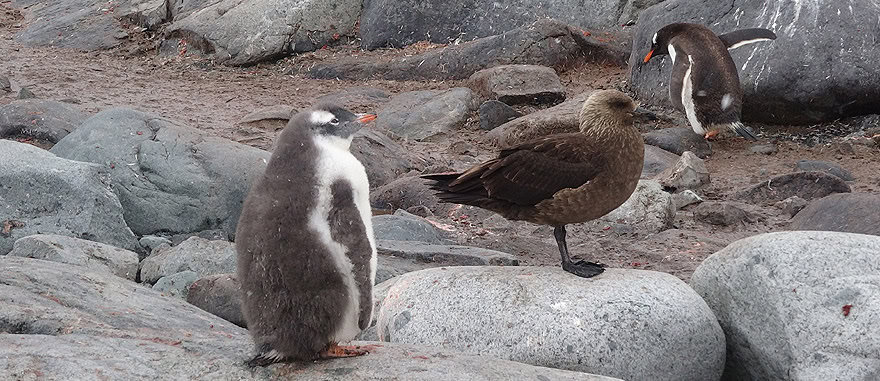
He searches for the perfect opportunity, until a defenseless penguin is either alone or hurt.
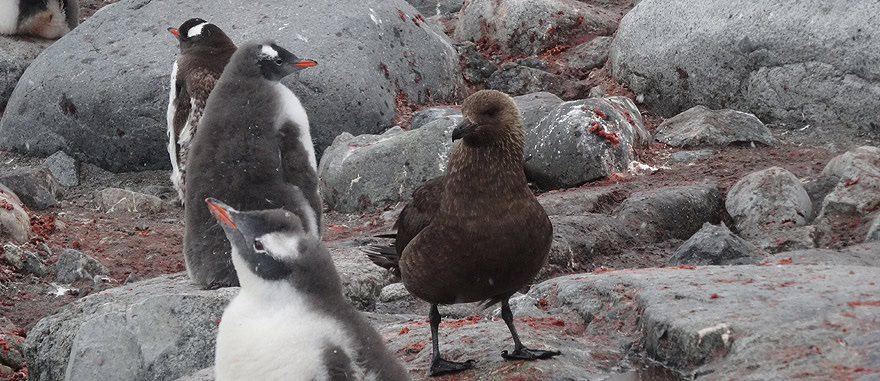
And after he eats the dead carcass, while other skuas will join him for the feast. They have to eat carefully since other penguins will try to attack them thinking the little baby penguin might still be alive. Too late…
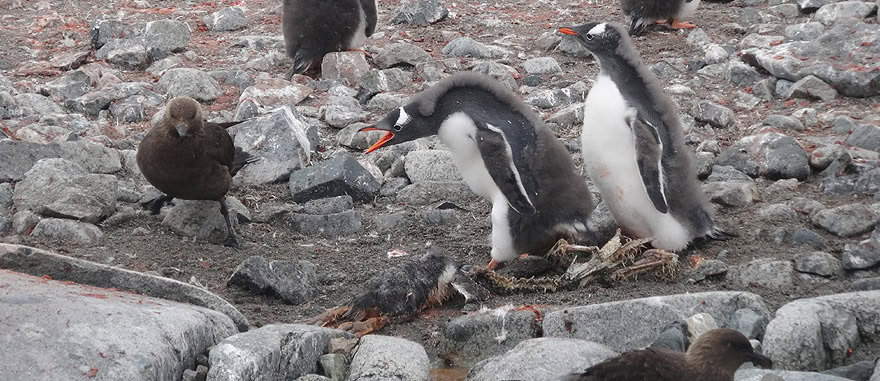
Skua and Gentoo Penguin fight for survival
Penguins of Antarctica
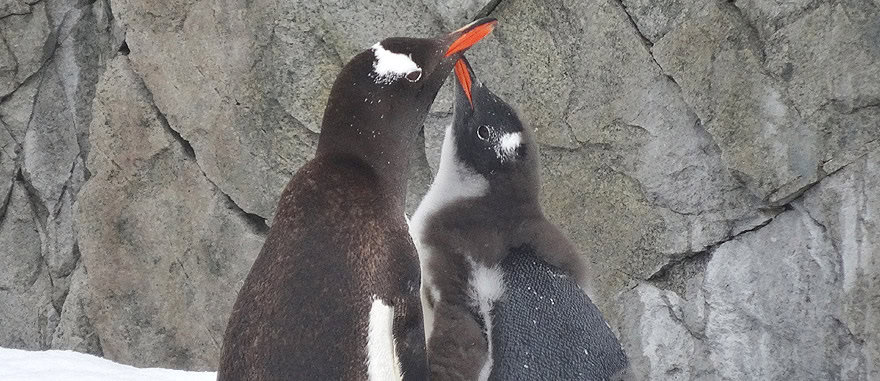
Back to our penguins in Antarctica ok?
so,
I got the chance to glimpse penguins for the first time during a Zodiac inflatable boat trip around Horseshoe Island – below the 66° south. I first thought they were little people with black suits, but I was wrong, they were just a dozen tiny Gentoo penguins.
Something I thought out to be unique and marvelous, started to be a day-to-day scenery where almost all islands and all regions of Antarctica were populated by these cute little creatures.
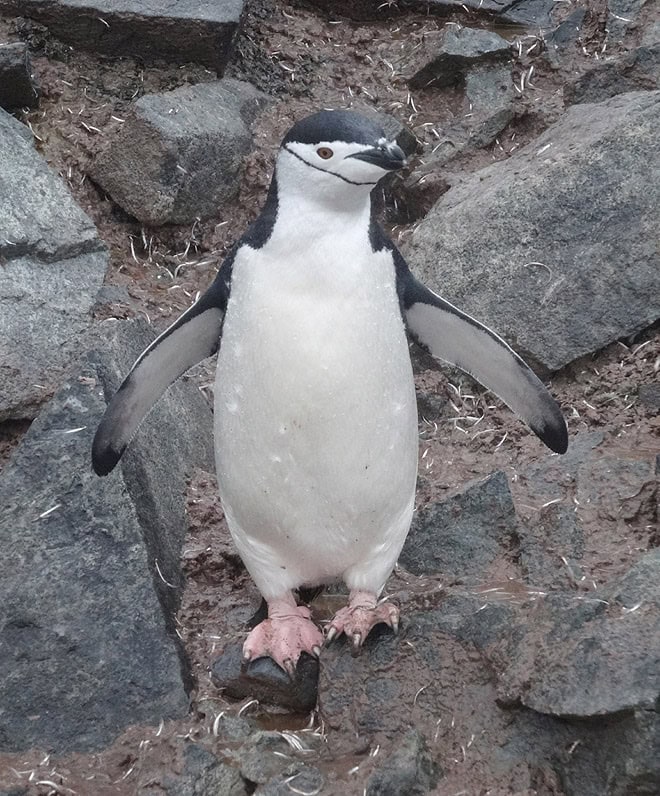
I got to see Gentoo penguins, Adelie penguins, and Chinstrap penguins.
Gentoo Penguin
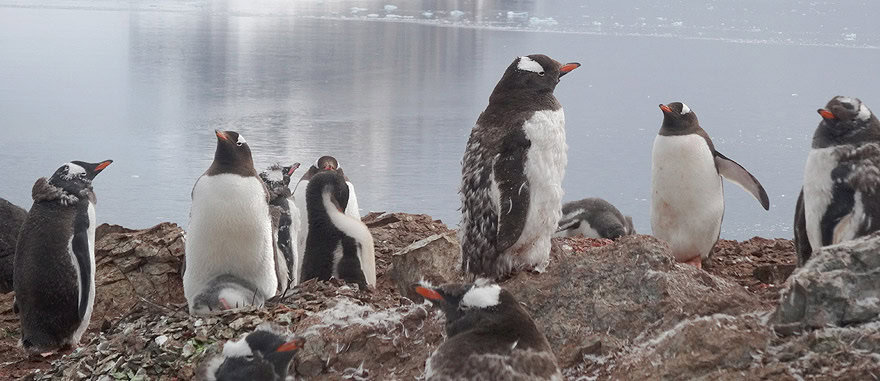
Gentoo penguins are common along all the Antarctica peninsula. Only Petermann Island itself has a breeding colony of around 3000 pairs of Gentoo penguins – that makes a total of 6000 penguins (without counting their chicks).
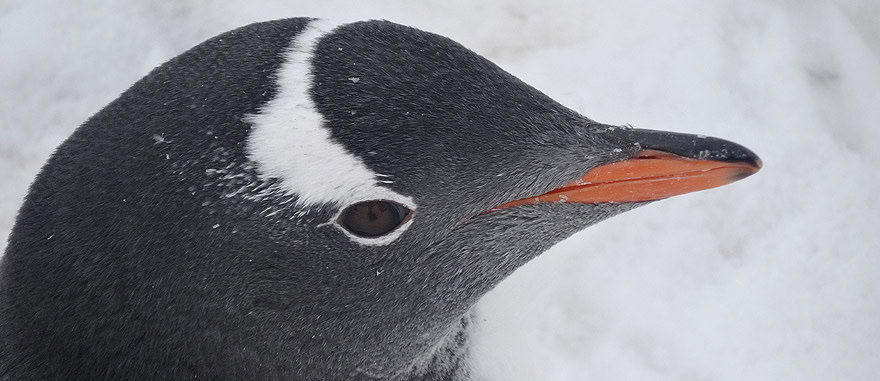
The Gentoo penguin is the third largest species of penguin reaching a height of 51 to 90 cm / 20 to 35 inches. Gentoos are long-tailed, with bright orange bill and a white stripe across the top of the head.
Gentoo Penguins arriving to Cuverville Island beach:
Adelie Penguin
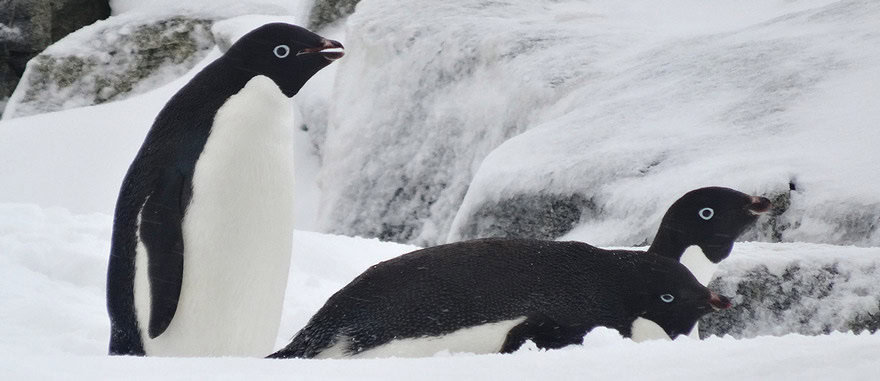
Adelie penguins are very beautiful and have a distinctive plumage. It is supposed to exist almost 8 million penguins of this type. The Adelie penguin is among the seabirds that live along the most southern parts of Antarctica – beyond the 66º.
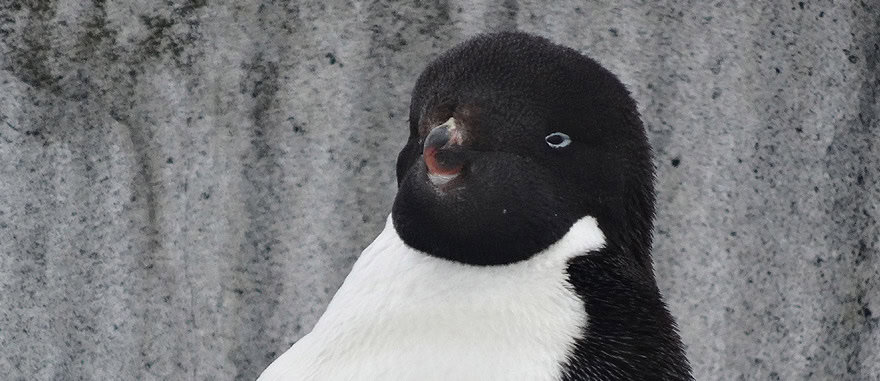
The Adelie Penguin is mid-sized reaching a height of 46 to 75 cm / 18 to 30 inches. Adelies are long-tailed, with a white ring surrounding the eye and feathers hiding most of the bill.
NOTE: Interestingly enough to mention, the Adelie penguin is among the four animals in the Planet that commit prostitution. Adelie Penguins trade sex for stones due to the shortage of stones they need to build up their nests. Other prostitute animals are chimpanzees, crab-eating macaque and humans.
Chinstrap Penguin
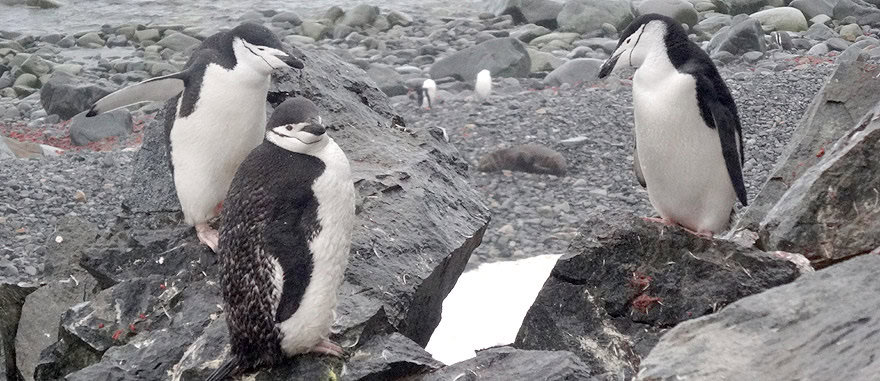
Chinstrap Penguins have a very nice and unique black band below their bill and look like they have a beard. I only saw chinstrap penguins in a relatively big colony on a cliff in Half Moon Island – South Shetland Islands.
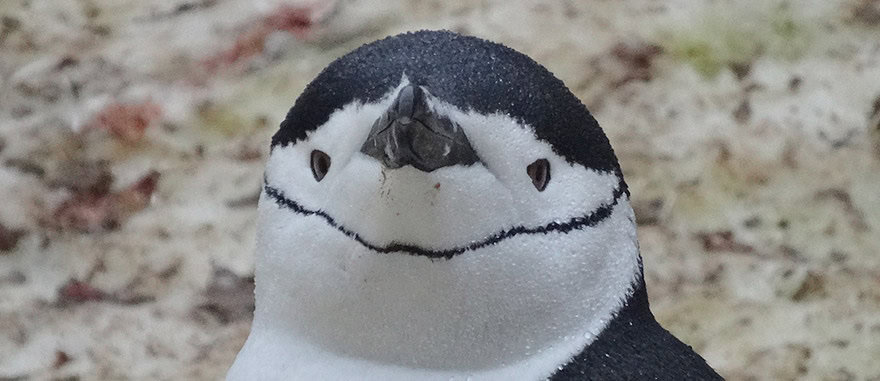
The Chinstrap Penguin is mid-sized, reaching a height of 68 cm / 27 inches. Chinstraps are short-tailed, with the inner sides of their flippers colored in white. Their most evident characteristic is the narrow black stripe under their heads.
Chinstrap Penguins in Half Moon Island
Penguin colonies in Antarctica – Images
Some photos to show you how different colonies of penguins look like.
Gentoo penguin colony in Petermann Island
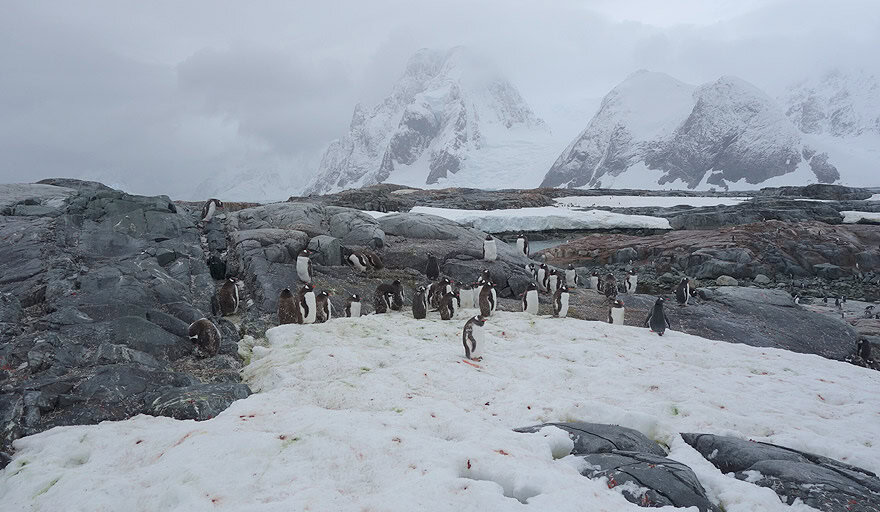
Petermann Island is located in the Kiev Peninsula at 65 ° 10’S 64 ° 10’W. The island was discovered by the German expedition in 1873.
Adelie penguin colony in Petermann Island
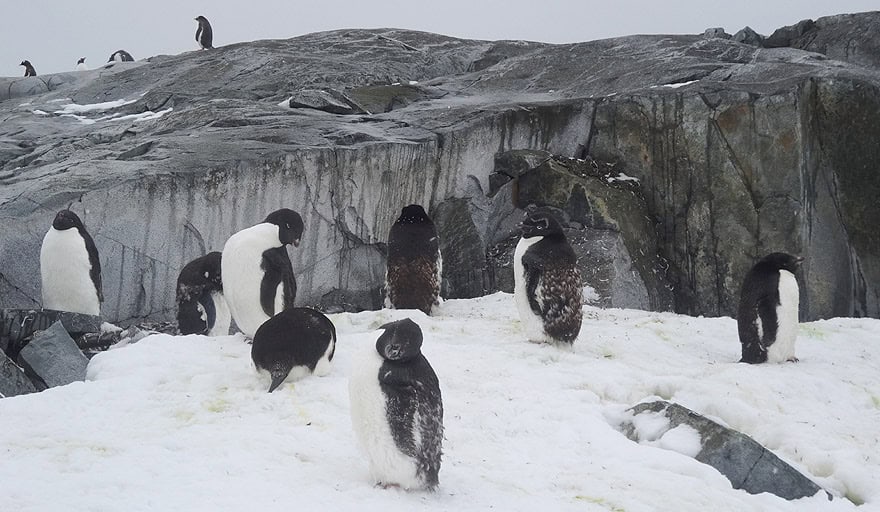
In Petermann Island there are about 3000 pairs of Gentoo penguins plus their offspring.
Gentoo penguin colony in Jougla Point
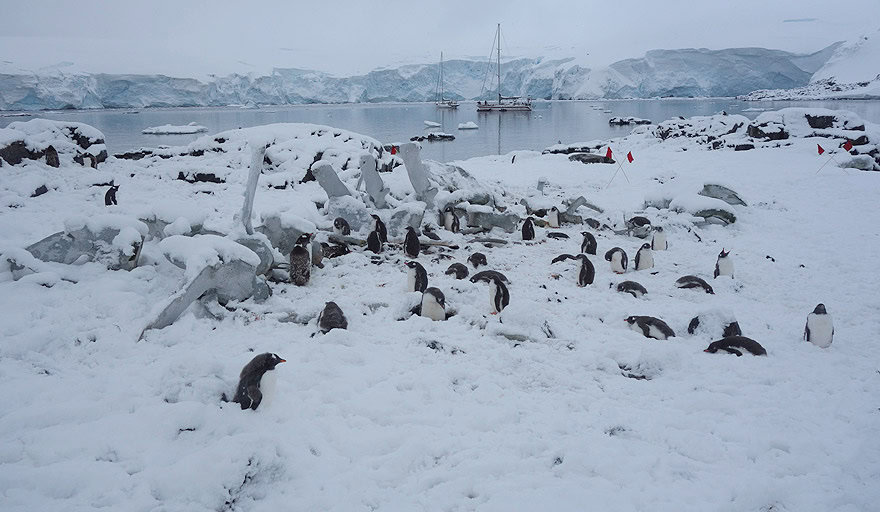
Jougla Point is located in Palmer Archipelago at 64 ° 50’S 63 ° 30’W. Jougla Point has a large colony of Gentoo penguins, some Weddell seals and several whale bones.
Gentoo penguin colony in Port Lockroy
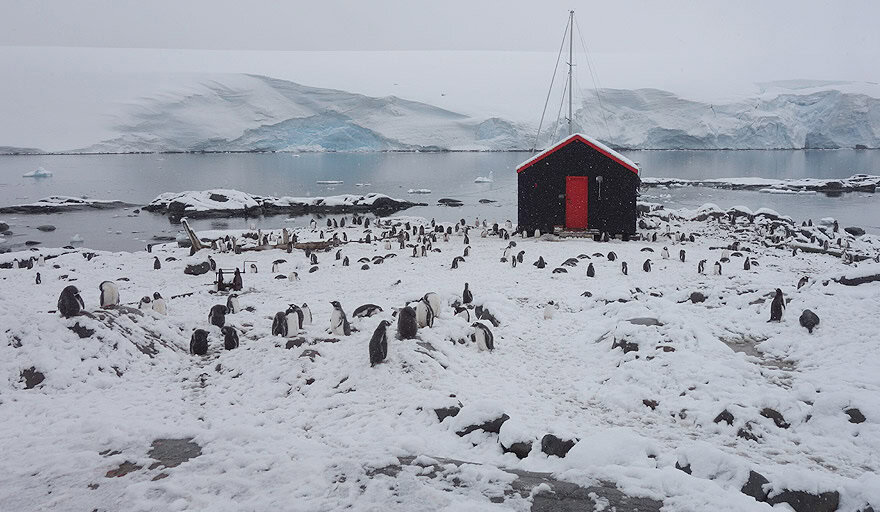
Goudier Island is located in the Palmer Archipelago at 64 ° 50’S 63 ° 30’W. In Goudier Island there is a natural harbor called Port Lockroy. There are many Gentoo penguins spread around everywhere.
Gentoo penguin colony in Neko Harbour
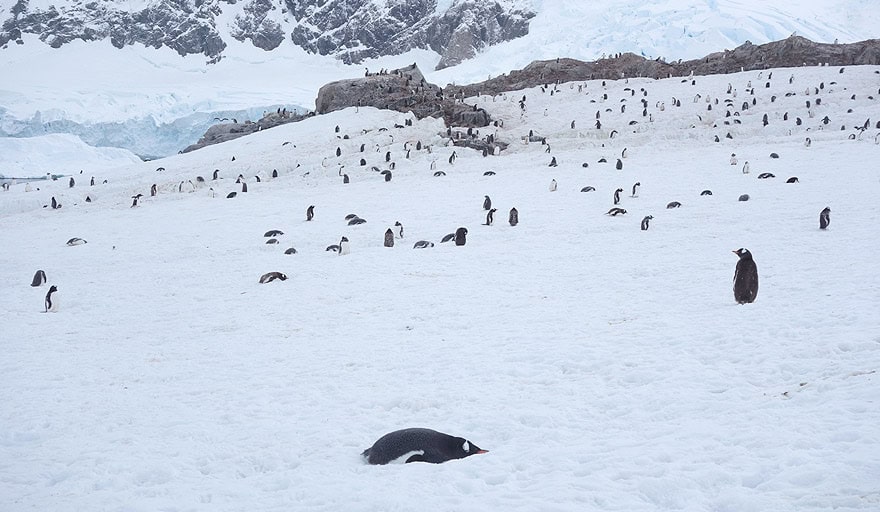
Neko Harbour is located in the Andvord Bay on the Antarctic Peninsula at 64 ° 50’S 62 ° 33’W. There is a large colony of Gentoo penguins in Neko Harbour.
Gentoo penguin colony in Paradise Harbour
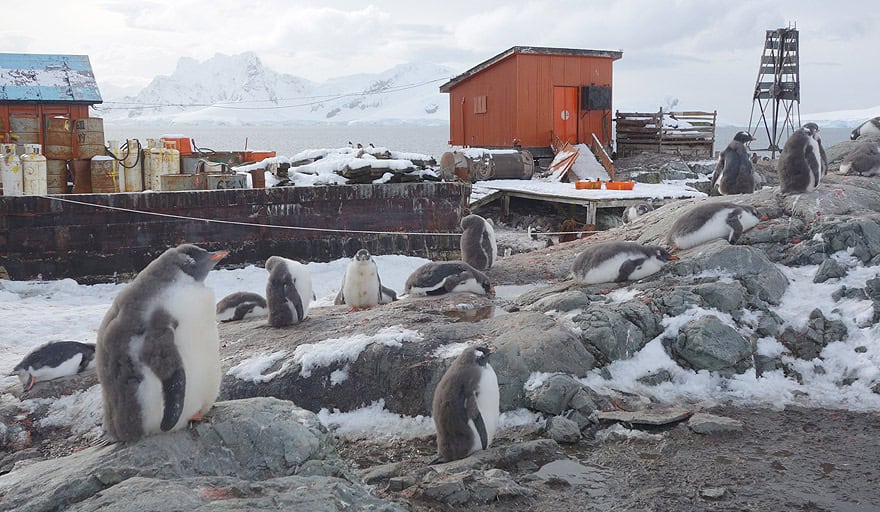
Paradise Harbour – Almirante Brown Antarctic Base is located in the Antarctic Peninsula at 64 ° 51’S, 62 ° 54’W. There is a large colony of Gentoo penguins in Paradise Harbour.
Gentoo penguin colony in Danco Island
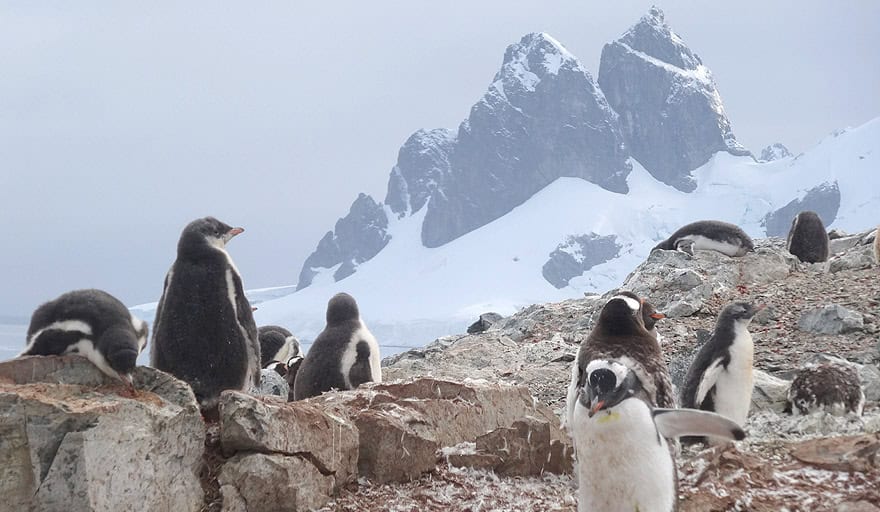
Danco Island is located in the Errera Channel at 64 ° 44’S 62 ° 37’W. There is a large colony of Gentoo penguins in Danco Island.
Gentoo penguin colony in Cuverville Island
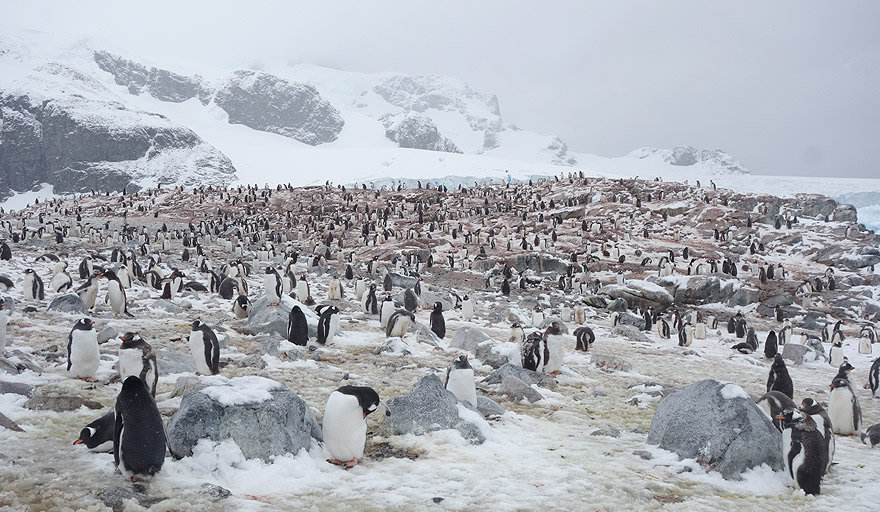
Cuverville Island is located in the Errera Peninsula at 64 ° 41’S 62 ° 38’W. This island is famous for having the largest colony of Gentoo penguins in the Antarctic Peninsula region. There are about 13000 penguins plus their offspring.
Chinstrap penguin colony in Half Moon Island
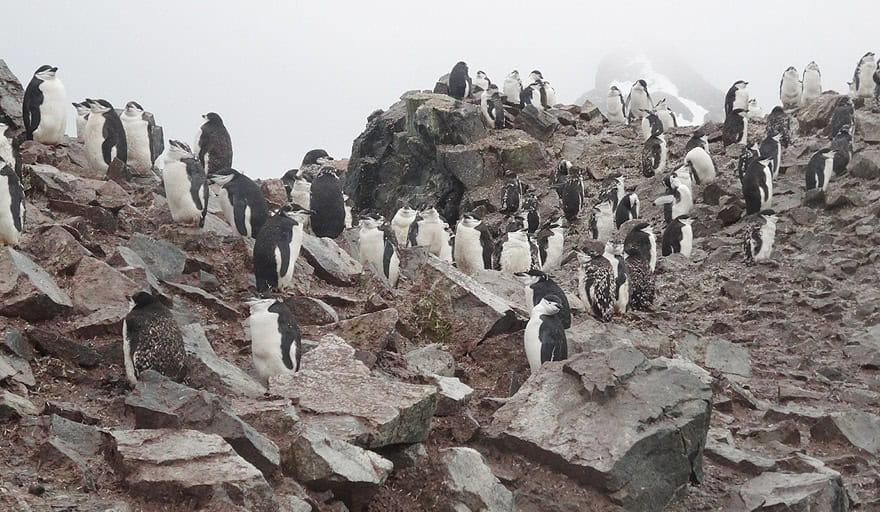
Half Moon Island is located in the South Shetland Islands at 62 ° 35’S 59 ° 55’W. There are two large colonies of Chinstrap and Adelie penguins in Danco Island.


